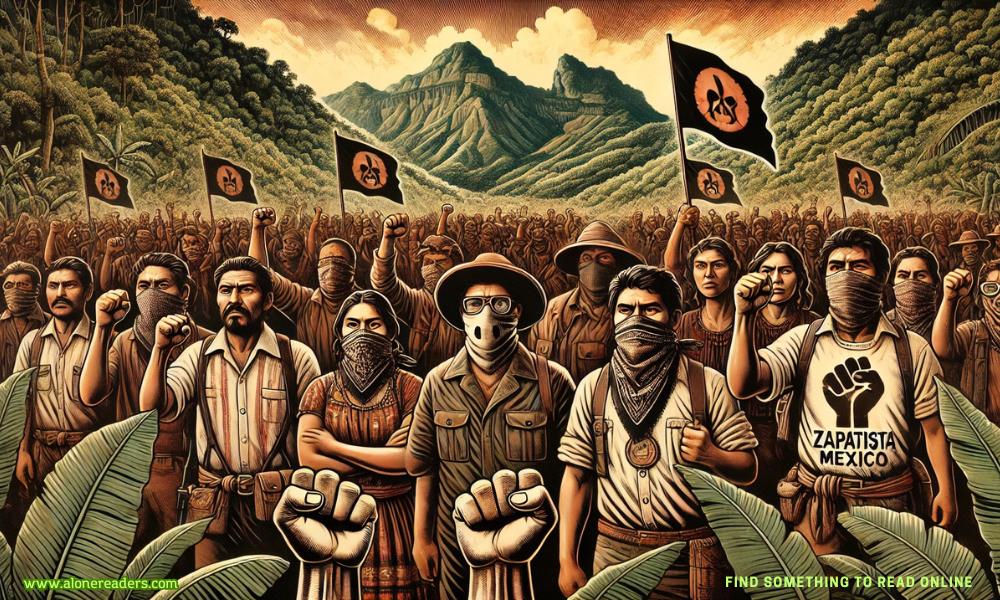
The Zapatista Uprising in Mexico, which began in 1994, marked a pivotal moment in the struggle for Indigenous rights, both in Mexico and around the world. This movement, led by the Ejército Zapatista de Liberación Nacional (EZLN), or the Zapatista Army of National Liberation, sought to address the centuries-old marginalization and exploitation of Indigenous communities, especially those residing in the state of Chiapas. It was a rebellion fueled by a profound need for justice, equality, and dignity, aiming to combat poverty, discrimination, and government neglect. Though it started as a regional struggle, the Zapatista movement quickly gained international attention, becoming a symbol of resistance and inspiring similar movements globally.
The uprising officially began on January 1, 1994, a date that was strategically chosen to coincide with the implementation of the North American Free Trade Agreement (NAFTA) between the United States, Canada, and Mexico. NAFTA, though celebrated by some for its promise of economic growth, was viewed by the Zapatistas as a threat to Indigenous and rural communities in Mexico. They feared that the agreement would primarily benefit wealthy elites and multinational corporations, while small farmers, particularly Indigenous ones, would suffer from the loss of protections for their lands and livelihoods. The EZLN's decision to rise on that day was a powerful statement against neoliberal economic policies that they felt would exacerbate inequality and force them into further poverty.
The uprising caught the Mexican government off guard. Chiapas, one of Mexico’s poorest states, was suddenly the center of intense political and military activity. The Zapatistas, a relatively small, rural guerrilla force, initially used armed resistance to seize several towns in Chiapas. Their primary demands included land reforms, improved health and education, respect for Indigenous culture and language, and autonomy for Indigenous communities. They sought recognition of their basic human rights, which had been systematically ignored or violated for generations. Subcomandante Marcos, the charismatic spokesperson for the EZLN, emerged as the movement's public face, articulating the Zapatista grievances and goals in a way that resonated not only with Mexicans but with audiences around the world.
The Mexican government responded to the Zapatista insurgency with military force, resulting in a brief but intense armed confrontation. However, the government soon realized that a violent crackdown could worsen the crisis, especially as international attention grew. In the weeks that followed, a ceasefire was negotiated, and peace talks began, though not without interruptions and ongoing tension. The Zapatistas used this period of relative peace to strengthen their community networks and increase public awareness of their cause, gaining support from human rights groups, activists, and intellectuals worldwide. The movement’s commitment to non-hierarchical, participatory politics and its rejection of traditional, centralized leadership structures were particularly inspiring to those disillusioned with conventional political systems.
One of the remarkable aspects of the Zapatista movement was its reliance on media and communication to disseminate its message. Subcomandante Marcos and other Zapatista leaders effectively used letters, communiqués, and statements to bring attention to the plight of Indigenous communities. These writings often blended poetic language with sharp political analysis, painting a vivid picture of the systemic injustices facing Indigenous Mexicans. The movement’s emphasis on grassroots organizing and horizontal power structures, rather than conventional military conquest, appealed to activists across the globe who were advocating for social justice and Indigenous rights.
As the uprising evolved, the Zapatistas established autonomous zones in Chiapas, where they implemented their vision of self-governance, education, and healthcare. These zones, known as "caracoles," became the heart of Zapatista life, allowing communities to operate independently of the Mexican government. The Zapatistas organized their own schools, clinics, and governing councils, aiming to create a society that prioritized communal well-being over profit and individualism. Although these areas faced challenges, including limited resources and persistent government surveillance, they served as powerful examples of Indigenous resilience and self-determination.
The impact of the Zapatista movement extended far beyond Chiapas. It challenged the Mexican state to reconsider its policies toward Indigenous communities, inspiring changes in national discourse and, to some extent, policy reforms. The Mexican government introduced amendments to the constitution to recognize the rights of Indigenous peoples, though many activists felt that these changes were insufficient and largely symbolic. Nonetheless, the Zapatista movement succeeded in raising awareness of Indigenous rights and highlighted the deep-seated issues within Mexican society.
The legacy of the Zapatista Uprising remains significant today, with the EZLN continuing to advocate for Indigenous and human rights. Their struggle has influenced numerous social movements worldwide, from anti-globalization protests to Indigenous rights campaigns in other countries. The Zapatistas have shown that a small, marginalized community can have a profound impact on national and international discussions around human rights, social justice, and the ethics of economic policy. By advocating for a more equitable and inclusive society, they have inspired generations of activists to push for systemic change and to envision alternatives to the dominant economic and political paradigms.
The 1994 Zapatista Uprising represents a powerful chapter in the history of Indigenous resistance and social justice. It underscored the enduring inequalities faced by Indigenous communities and the lengths to which they are willing to go to demand respect and recognition. For the Zapatistas, their struggle was not merely a political act but a moral imperative rooted in centuries of oppression and dispossession. Their commitment to dignity, autonomy, and equality remains a testament to the resilience and strength of Indigenous peoples in Mexico and beyond. As such, the Zapatista Uprising is more than a historical event; it is an ongoing call for justice and a reminder of the power of solidarity in the fight against oppression.